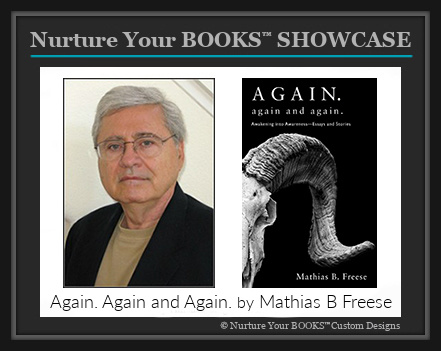I’ve read Wakefield’s book twice, for I “grew up” in the Fifties. I purposely did so to refresh my memory of the times. In 1950 I was 10 and by 1960 I was 20, when I first saw La Dolce Vita. I can go many different ways with this blog but I will simply immerse myself into my associations and remembrances. In 1957 I went with Stan Edelman, both of us about 17, to Greenwich Village. I recall that I picked up Finnegan’s Wake in a book store and was put off by the gibberish, it seemed to me, that ran for pages — who knew I was interrupting a dream? We roamed the village and I especially recall going into an artist’s quarters who had posted a sign at the door that he was having a showing of his photographs. To go upstairs, to have cheese and a cracker, to browse, sublimely innocent and feeling sublimely safe, reflects upon a time in which riding the subway and being invited into an artist’s home was not unnatural. It is a very pleasant memory of a different time and sensibility.
When I was in the village we caught a performance by an eccentric monologist called Brother Theodore; he was strange, bizarre and ranted and raved about Quadrupedism if I recall correctly — that man should go on all fours. Much later, very much later I learned he had been ransomed from Dachau for about one dollar for giving up the rights to the family fortune which was in the millions. Years later he got the public’s attention with visits to David Letterman — imagine Lenny Bruce doing standup in a death camp and you have Brother Theodore. At 17 I imagined he represented the offbeat and eccentric part of the village. In 1957 he was way out there. It was a good day to see him — just on a lark, my first adolescent outing to Greenwich Village.
I was too young, naive and immature to haunt the streets and crooked byways of the village at a time in which psychoanalyis was the predominant treatment for artists and painters, when jazz was laying down its New York roots, Mailer was writing about the “white negro” and Salinger’s stories were avidly looked forward to in the New Yorker. I missed Ginsberg and Kerouac, the Beats and Leroi Jones, later Imamu Biraku, writing his poetry and plays. I was in a dream state, emerging from but not engaging my world. It was the period of Eisenhower, panty raids, the 1955 Chevrolet Impala, the astounding Studebaker Golden Hawk — priceless styling to my eyes; it was a period in which there was silent passing in hallways in high school (!) and a white stripe down the corridors that you could not cross over. Air raid sirens warned us to crawl beneath our wooden desks and protestors were arrested in Times Square for not taking cover in assigned shelters. All this was around me but I was not a participant. It was a period in which people refused to sign petitions lest they be thought of as agitators or Commies — it was the McCarthy period.
Conditioning and conformity were all about and I was saturated in it. The Lonely Crowd, The Organization Man, and The Man in the Gray Flannel Suit spoke to that period. It wasn’t until the rapturous Sixties that I roused myself from slumber. Each one of us must know what it is to be asleep in life and then what it is to become aware. We are amazed at how we slumbered while fully awake, whatever that is. I went to a highly stratified high school, Jamaica High School, in fact. You knew your place in that school; we had tracks such as academic, commercial and general and in subtle and overt ways were reminded of that. Grades above all. The gifted were fawned over and coddled, principal and teacher pets.You just knew you were less or lesser than. I only recently discovered that Stephen Jay Gould and Michael Savage (he had another name, then) were there between 1955 to 1958.
For me it was the golden age of cars — the DeSoto, the heavy beetle-like Hudson, the Nash Rambler, the wraparound windshields and fins, the 1954 Pontiac Bonneville that I drooled over, the sleek and futuristic Studebaker designed by Raymond Loewy; the Chrysler Imperial and the early Ford Thunderbird; the movies of the Fifties had the latent undercurrent of doom — “The Day the Earth Stood Still,” “Them!” — ants changed into monsters by A-bomb blasts, “The Forbidden Planet,” “Ivanhoe,” “Demetrius and the Gladiator,” “East of Eden,” “Giant,” “The Ten Commandments,” “It Came from Outer Space,” “The Searchers,” “The Unforgiven,” and so on. In movie houses at the time Duncan yo-yo contests were held; maestros performed amazing feats with this ancient toy. Duncan was the best yo yo, Cheerio came in a close second. Jeans were called dungarees and crew cuts were in. If you saw a rare instance of a black man and a white woman on the street one gawked. Mother-of-pearl cufflinks were fashionable as well as charcoal gray suits ( the Windsor knot was for ties) and one always wore leather shoes — Regal or Florsheim, to wit — London Character if you had the bucks. I recall leather shoes for $18 in a shoe store window and I couldn’t afford them. We wore “sneakers,” then, either Converse or Keds. One resoled shoes and did not throw them out.Taps on the heels and tips prevented wear and made a melodious sound on pavement. Choices were limited, which as I look back, was a good thing: in reasonable doses, abstinence creates character.
As I recall, I sensed a kind of ennui, a kind of boring stasis was in the air. That is why Kennedy was met with such pleasure for he was one of the first “pop” presidents, although very much of the Fifties himself. The story goes that Mr. Clean was modeled after Eisenhower — I found him terminally dull. Sputnik in 1957 announced a new age and I recall seeing it in the afternoon skies after school with my friends. At 4 p.m. I’d go into the house and see Dick Clark’s American Bandstand and envied the young people of my age who were not shy enough to have girlfriends and knew how to dance. On Saturdays I stayed in bed watching cowboy flics from the thirties — Buck Jones, Bob Steele, Hopalong Cassidy, Tex Ritter, Ken and Kermit Maynard filled airspace on TV; The Buster Crabbe Flash Gordon serials held me enraptured — the Clay People, Emperor Ming, the Merciless. Films saturated my frontal lobes — forever. Amid the constancy, conformity, regularity of that world the seeds of the Sixties were being sown. Ferment was in the Village, that was for sure; psychoanalysis was on its wane, giving way to the Primal Screams of the Sixties.
Wakefield was in his mid-twenties, living and working in the Village while I was emerging — he had 10 years on me. I awoke in the Sixties and acted out as well. So I was a transitional young man who could not or who was not aware enough to see the world about me; it takes a long time to grow up and we often end our years still immature, still yearning, still wishing, wanting and often still unaware of ourselves first, and of course, by definition, unaware of those close to us. No man goes to his grave fully aware. We couldn’t handle that. It is not valued. Not in this culture in any case.






2 responses to “Dan Wakefield, New York in the Fifties”